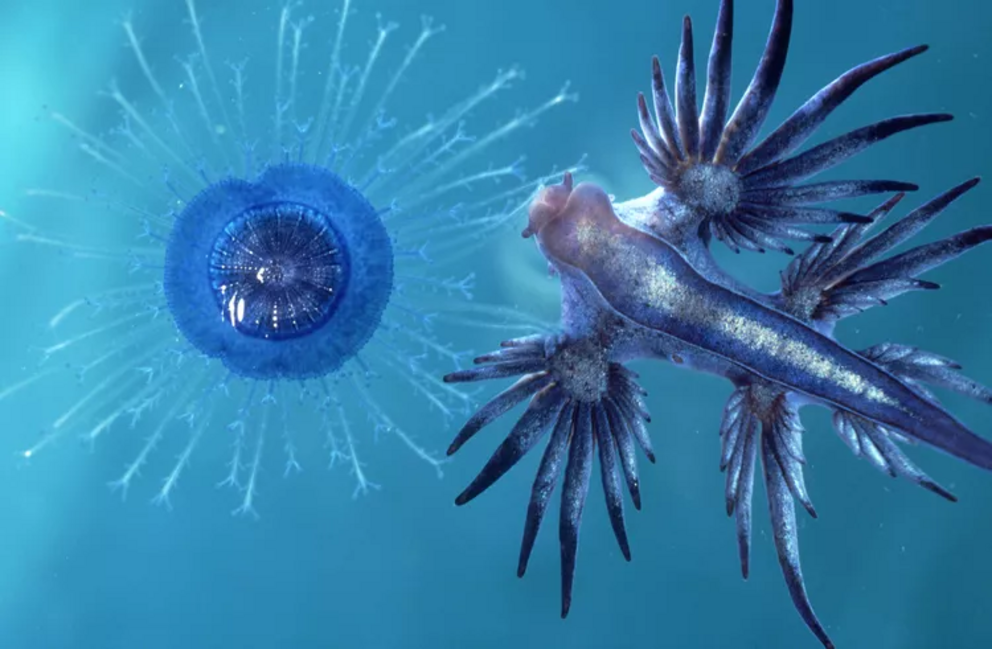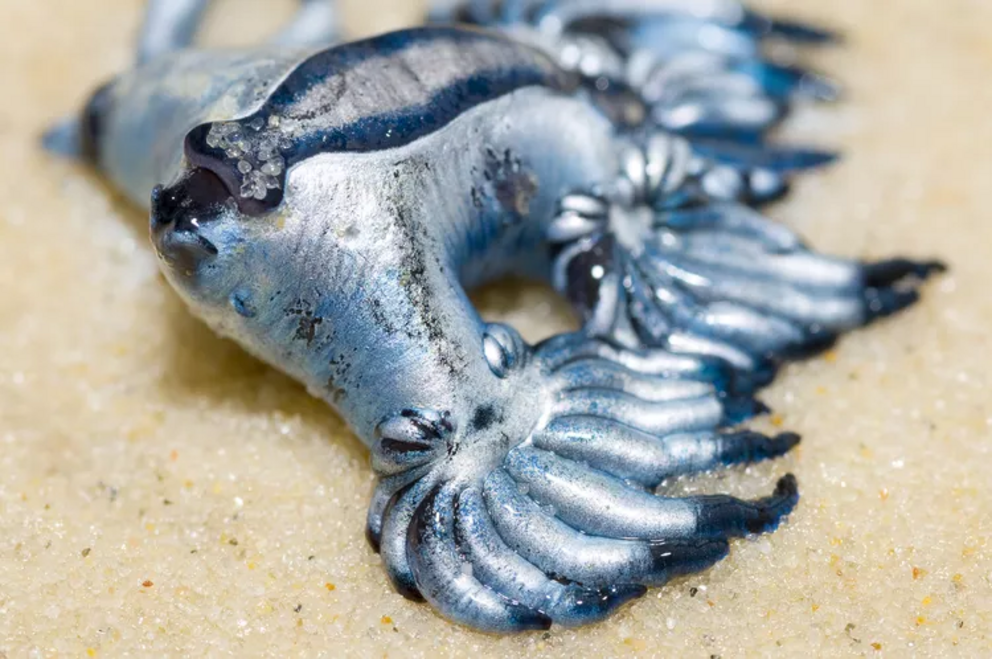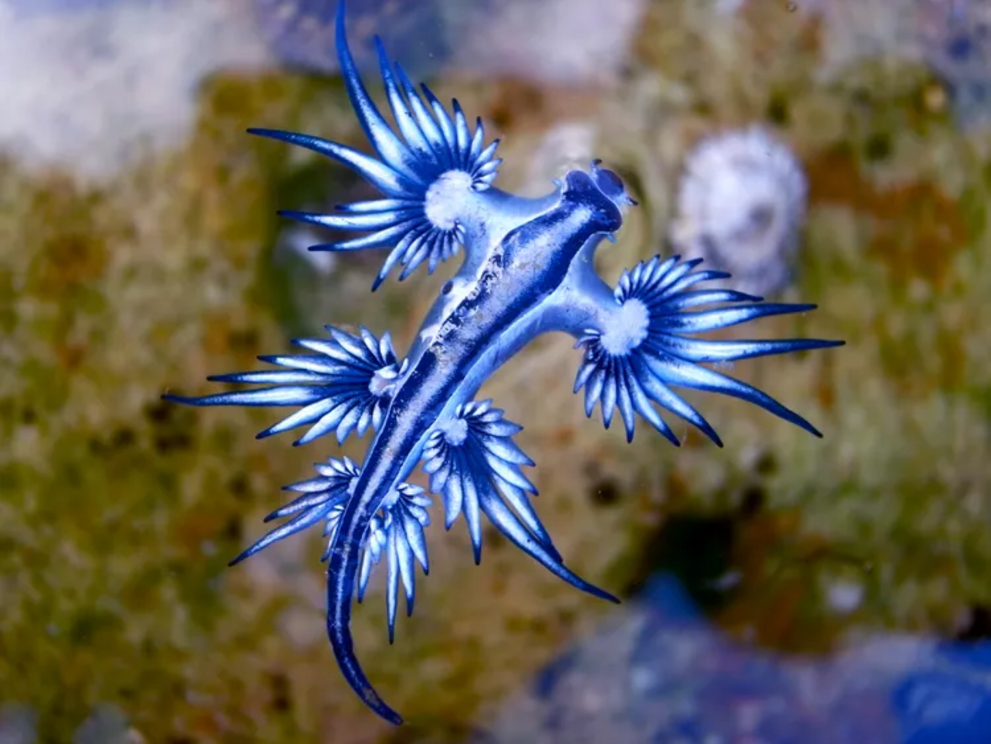Six fascinating facts about blue dragons
Blue dragons, or more properly Glaucus atlanticus, are part of a group of creatures known as nudibranchs or sea slugs. They also are known as blue sea slugs, blue angels, and sea swallows. There are a few similar blue dragon species within the Glaucus genus.1 These creatures free float in currents of temperate and tropical ocean waters worldwide, specifically the Atlantic, Pacific, and Indian oceans. It is unknown how many blue dragons exist, as they are small and hard to quantify.
Blue dragons grow to about 1.2 inches long, yet they eat creatures many times their size. They do this with radular teeth that resemble a knife's serrated edge along the creature's chitinous jaw. Chitin is the same hard substance that forms the outside of ants and crabs.
Learn more about these striking blue aquatic creatures.
Fast Facts
- Common Name: Blue dragon or blue glaucus
- Scientific Name: Glaucus atlanticus
- Average Lifespan in the Wild: One month to one year
- IUCN Red List Status: Not assessed
- Current Population: Unknown
1. Blue Dragons Camouflage With Color

This animal's blue color is for more than just show. The sea slug uses its hue to its advantage as it floats on the ocean's surface. Its cyanic side faces upward to camouflage it against the sea's blue color, while the silver side faces downward to camouflage it against the water's bright surface.
This clever suit of color keeps it virtually invisible to predators from both above and below.
2. They Pack a Sting

In addition to its camouflage abilities, the blue dragon has a pretty wicked defense mechanism. If the coloring happens to fail, it'll simply deliver a vicious sting.
The slug isn't venomous all on its own, however. It stores the stinging nematocysts created by the creatures on which it feeds, including venomous siphonophores and Portuguese man o' wars. These cells are stored and concentrated, so when it's touched, the blue dragon can release these stinging cells to pack an even more powerful punch than the man o' war hydrozoan.
3. They Form Groups Called Blue Fleets

Groups of blue dragons float among the blue-tinted siphonophores they eat, creating formations known as "blue fleets." This behavior makes sense for feeding and mating, but it does create conditions favorable for oceanic winds to blow them ashore by increasing their exposed surface area.
Blue dragons curl into balls to protect themselves when they're caught in waves and are being pushed toward the beach. And if they do become stranded on the sand, their venom remains active—even after they die. This means that humans who pick up or step on the creatures will experience their fiery sting.
4. They Don't Make Good Pets
A blue dragon's striking blue looks lead some people to consider adding them to a home aquarium. Fortunately, these creatures aren't readily available for purchase. They don't make good pets because of their dietary needs, it is impossible to find food for them at a pet store. The other more obvious issue is that powerful sting. Even the most experienced aquarium keepers pass on adding these nudibranchs to their setup.
5. They Are Hermaphrodites
All blue dragons are hermaphrodites, meaning they have both male and female reproductive organs. When two blue dragons mate, they engage carefully with long, curved, almost S-shape bends in their penises. Their long anatomy keeps them from being stung by their partner. This mating results in strings of 20 eggs that the slug lays on floating objects such as driftwood or the floating carcass of their prey.
6. They Are Showing Up in Unexpected Locations
In many locations worldwide, blue dragons are being spotted for the first time. This may be because the warming ocean, combined with increased storm activity, results in them floating farther and/or into different coastlines. It may also be related to cyclical changes in Portuguese man o' war populations.2
Researchers revised the range of blue dragons 93 miles farther north into the Bay of California after fishers netted them as part of their catch in 2015.3 In 2017, they were spotted in the waters of Taiwan.4 In May 2020, they surprised beachgoers in South Padre Island, Texas, and then again in Cape Town, South Africa, in November of that year.
Frequently Asked Questions
What happens if you touch a blue dragon?
Blue dragons will not hesitate to sting if they feel threatened, and their sting is venomous not because they're venomous themselves but because they eat venomous creatures like the Portuguese man o' war. Being stung by one would be excruciating and most likely cause welts on exposed skin.
Are blue dragons rare?
Though they're infrequently encountered by humans, it's unclear just how rare blue dragons are because they're so tiny and therefore difficult to quantify in the vast, open ocean. The species has not been assessed by the IUCN.
How is climate change affecting blue dragons?
Blue dragons seem to be migrating to new regions, including the Gulf Coast of the U.S., because of increased storm activity and warming water temperatures. Like most marine animals, these sea slugs are also impacted by ocean acidification, which could reduce the amount of food their prey eats.
Why This Matters to Treehugger
Understanding the needs and behaviors of our fellow creatures is key to protecting biodiversity and habitat conservation. We hope that the more we learn about amazing species like blue dragons, the more motivated we’ll all be to help protect our oceans.
For full references please use source link below.

